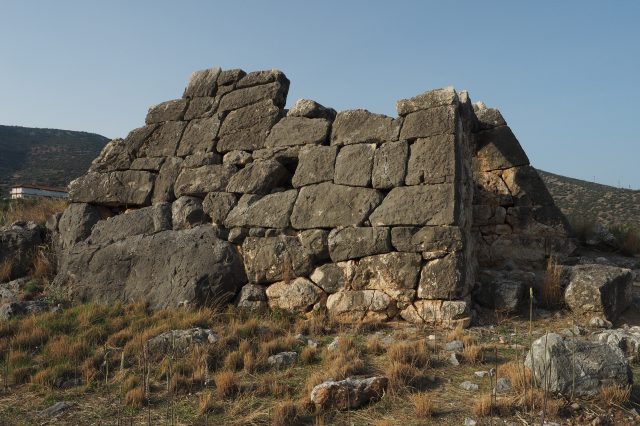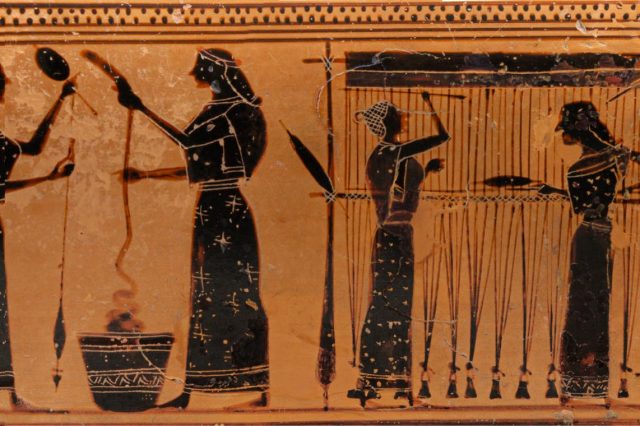One hundred years after the discovery of the Phaistos Disc, only three words have been deciphered. The inscriptions on the ancient Minoan artifact are an absolute enigma as this writing system was unknown before the discovery of the disc.
Greece, with its myriad islands, stands as a bastion of ancient mysteries and inspiring history. There’s an enduring humor among locals that every ancient stone in Greece harbors a fragment of history, a testament to the nation’s rich and varied past.
Over a century ago, on the island of Crete, an enigmatic artifact known as the Phaistos Disc was unearthed, captivating historians and linguists alike. Bearing inscriptions that have long eluded decryption, this artifact has become a symbol of historical intrigue. Recent efforts by historians suggest that we are on the cusp of unraveling the mystery and origins of this remarkable relic.
To further explore this, let’s delve into some intriguing facts about the Phaistos Disc:
- The Phaistos Disc was unearthed in a basement of the palace within the Phaistos archaeological site in Crete, revealing its first hint of mystery.
- Its creation dates back to the period between 1900 and 1700 BC, placing it firmly within the Bronze Age.
- Despite its modest size of just 6 inches in diameter, the disc holds a staggering array of symbols, a testament to its complexity.
- The inscriptions on the disc are unique, bearing no resemblance to any other known ancient writing system, adding to its enigma.
- Both sides of the disc are adorned with a total of 242 symbols, intricately arranged in spiral patterns that captivate the observer.
- These symbols comprise 45 different pictographs, each contributing to the disc’s dense and mysterious narrative.
- The style of the inscriptions suggests they are written in an as-yet-unknown form of Minoan script, offering a potential link to the ancient civilization of Crete.
- Among the inscriptions, three words have been tentatively identified using parallels with ancient Greek languages, with each of these words thought to mean ‘mother’ or ‘goddess.’
- Recent studies conducted in 2018 and 2019 have led experts to claim that they can now read 99% of the inscriptions, a significant breakthrough in understanding this artifact.
- The prevailing hypothesis among experts is that the disc may be a Minoan lyrical hymn dedicated to a Minoan goddess, suggesting not only a religious but also a cultural significance.
Let’s summarize what we learned
The ability to read an ancient text to a certain extent does not guarantee the ability to understand. This is what the current researchers of the Phaistos Disc said during the press release of their latest discoveries. What this means is that despite their success in reading the inscriptions using similar ancient Greek languages, the meaning behind the writings remains unknown.
For now, experts were able to understand a total of three symbols and all suggest an identical meaning – mother or goddess mother. This is why for now, the Phaistos disc is considered a lyrical hymn to the ancient Minoan goddess.
The possibility that it is not a Minoan creation exists to this day and will until the whole message is deciphered. However, the inclusion of symbols typical for Minoan artistry like dolphins, cattle, etc. is more than eloquent for us to believe that it is. Moreover, it was discovered at the very palace of one of the most important cities of the Minoan civilization.
The most curious characteristic of the Phaistos Disc is the way the inscriptions were made. In most cases, similar ancient artifacts were handmade if we can call it like that. Obviously, everything was handmade back then but I’m referring to the actual placement of the symbols. The ones on the Phaistos disc were not inscribed but rather pressed. This means that someone back then made a template for each symbol and used it for the inscriptions on the disc.
What this suggests is the possibility that the Phaistos Disc was not a unique item but mass-produced. This theory is supported by the size of the disc which is unusually small. Last but not least, the theory that it is a hymn perfectly fits the idea that this could have been one of many such discs.
Join the discussion and participate in awesome giveaways in our mobile Telegram group. Join Curiosmos on Telegram Today. t.me/Curiosmos





